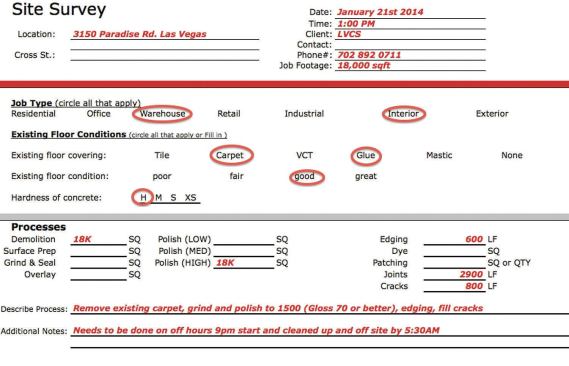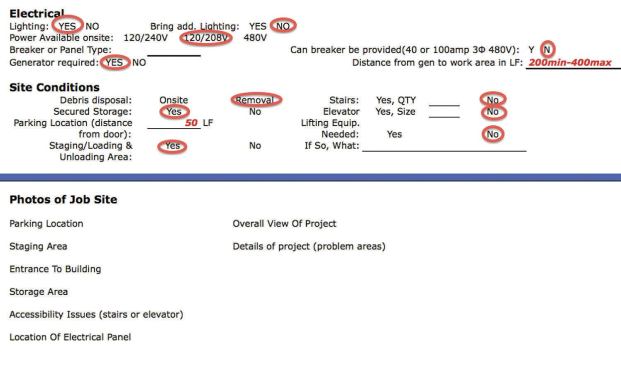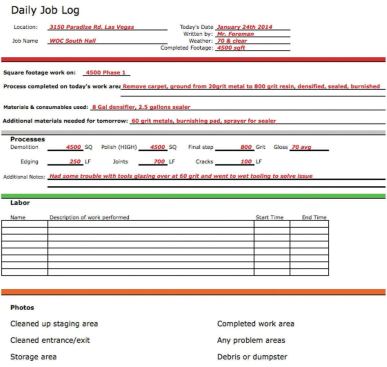Brandon Fiege
At the very least, your site survey should include square footag…
Bid for profit
When putting your bid materials together, the first priority is to submit a bid that will give you a profit, says Padgett of Polished Concrete Solutions. Sounds simple, right? Not so, he says: “I’ve met people in the industry who have, at times, bid blind.” Before even conducting the all-important site survey, contractors need to do their homework about their own businesses up front:
What does it take to complete a job? Conduct time studies on your crews and take actual measurements to gauge, for example, how many square feet per machine per hour it takes your crew to complete a project. “If you don’t know the production rates of your crews, then you will not be able to determine your expectations per hour,” says Padgett. “But if you know how long it takes them to open a 10,000-square-foot floor with a pair of 80s, then you have a good idea of what your starting point is in a bid.”
What is your true overhead? To find out, you’ll have to take into account equipment investments and maintenance costs, materials costs, potential revisits after projects are completed, and seasonal downtime. “This is a high-overhead business because there can be a lot of downtime,” Padgett explains. “Your profits are going to have to cover those slow times.”
Before bidding a project, you’ll also need to know:
- Project size
- Scope of work
- If it is a union, nonunion, or prevailing wage project—and if you’ll be paying your crews overtime due to travel, etc.
- Site access and availability—find out if you have 24/7 access to the jobsite. Just as important, make sure you’ll have water, waste disposal, and proper lighting. If you have to provide your own, include the costs in your bid.
- Number of travel mobilizations
- Customer expectations—be transparent with customers about problem areas, alternatives to offset costs, and added costs for additional options.
The first three bullet points will affect the biggest dollar amounts in your bid. The last, however, can be the difference between profit and net loss.
“You can get into trouble financially if you’ve put all the costs in up front and spent the cash, and the customer says, ‘Well, that wasn’t exactly what I was looking for,’” Padgett warns.
For more on how to calculate a profitable bid, click here.
In our October issue, the second of this two-part series will discuss how to document and track your work so you can bid and plan right.






